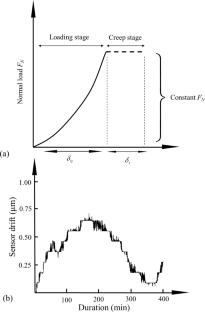On the creep problem of soft-rigid interfaces: analysis of the normal contact behavior and application of creep models
Abstract
In this study, we examined at the grain-scale the normal contact behavior of rigid-soft interfaces via a series of micromechanical experiments, in which “rigid” refers to quartz particle and “soft” refers to polymeric granules composed of recycled rubber. Emphasis was placed on the influence of creep by quantifying the creep deformations at the composite interface subjected to long-term loading. The experimental data suggested that the creep behavior of the sand-rubber interface subjected to different normal loads is not deterministic and that there is a correlation between creep and elastic deformations. We also examined the applicability of available creep models to the specific creep problem and the parametric study highlighted the heterogenous features of the creep contact behavior of the sand-rubber samples, which is dependent on the elastic properties of the rubber and the irregular geometry of the contact area. The ground-truth dataset suggested the Burgers model is the most suitable contact model for the creep problem at the sand-rubber interface. The parameters of the Burgers model were also calibrated for further exploration of constitutive models to be used in discrete-based computer analyses. This modeling also provided fundamental insights to understand the physics of the problem.


 求助内容:
求助内容: 应助结果提醒方式:
应助结果提醒方式:


